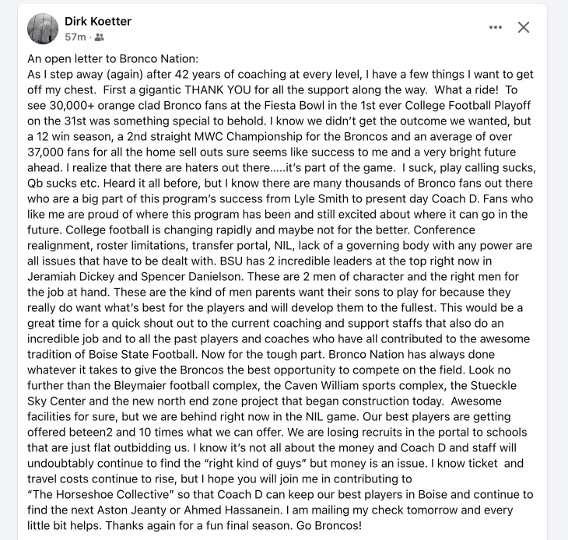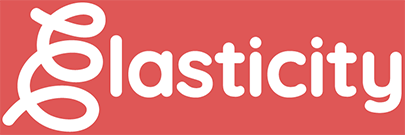Every year, we witness remarkable developments in business, marketing communications and technology. Even for fast-paced industries, some changes often seem as if they occur in the blink of an eye. Oftentimes, they have, and 2024 was no exception. Here’s a quick look at just a few developments that caught my eye, and how I believe they may further evolve in 2025.
THE AI PHENOMENON
When Amazon purchased Whole Foods in 2017, I thought it could evolve into the most disruptive business transaction since the iPhone was introduced. Certainly it’s been interesting, but pales in comparison to the explosion of Artificial Intelligence over the past two years. After years of being seen as the Boogie Man in sci-fi films, AI is now transforming nearly every aspect of society, culture and the economy.
Billions are being pumped into AI—the $6.6 billion that OpenAI just raised is one of the five largest U.S. venture capital rounds ever. The rapid development of machine learning, natural language processing and computer vision has enabled AI to be integrated into everyday applications. Siri or Alexa, real-time chatbots and recommendation systems are commonplace. Some organizations are using AI for big data analysis to derive insights from vast amounts of information, enhancing decision-making processes in businesses, research and policy-making.
AI has also turned marketing communications on its ear, reshaping the way content is created, shared and moderated on social media platforms. Algorithms are employed to filter inappropriate content, recommend posts and analyze user behavior, significantly affecting how information is disseminated and consumed.
But keep this in mind: AI tends to be shit-in, shit out. Much like needing a smart mind to interpret research, it requires a human to lead it (for now). Regardless, AI will likely play an even more significant role in shaping how we communicate, public discourse, policies and social dynamics—necessitating ongoing evaluation and adaptation to its implications.
WEIGHT LOSS, DIABETES AND BROADWAY DANCERS
Countless innovations are developed by well-meaning scientists for the betterment of mankind, and periodically, become tools for greed and ultimately wreak havoc.
This brings me to drugs like Ozempic, Jardiance and Wegovy, which were developed for the treatment of Type 2 diabetes but have been embraced by many for weight loss. This has driven a larger conversation about body image, health and fitness—with celebrity use driving normalization and media attention raising ethical questions about the promotion of pharmaceutical solutions over lifestyle changes (a significantly broader conversation for another day).
TV and streaming have become flooded by ads for these drugs, led by Jardiance’s dancing Broadway actors.
Platforms like TikTok and Instagram have seen a surge in related content, where users share personal experiences, results and advice, creating a community around the drug and further demonstrating the power of online influencers who often have no expertise whatsoever.
This illustrates the complex interplay between health, body image, societal values and social media influence. What will be interesting to follow—at least in my mind—is what ultimately comes from the long-term side effects of these drugs and what happens when consumers run out of money and can no longer purchase them.
POLITICS AND MEDIA
Political polarization has significantly influenced media landscapes and consumer behaviors. We all know this. Throw in the evolution of technology and the profound nature in which politics is impacting media cannot be overstated.
Many media outlets, of course, now cater to specific ideological audiences. Instead of flipping channels, consumers gravitate towards platforms that align with viewpoints, reinforcing pre-existing beliefs and creating echo chambers. Partisan media explicitly promotes particular political orientations, prioritizes sensationalism and emotionally charged content over balanced reporting, further deepening divisions among consumers who consume news selectively based on political biases. This has led to heightened skepticism toward media institutions, a dramatic erosion of trust in media, leading consumers to seek alternative sources outside traditional journalism, which may lack rigorous fact-checking and editorial standards. Pew Research Center found 17 percent of adults in the U.S. say they now regularly get news from TikTok while the 2024 election also saw a rise other alternatives such as podcasts, which are up 31 percent from 2023-2024.
Consumers are also now increasingly making purchase decisions based on a brand’s political stance or perceived values. Thus, some businesses have faced boycotts (which is not a new phenomenon) or support rallies depending on their political affiliations, pushing companies to navigate their public image (such as Tractor Supply) in a polarized environment.
Overall, political polarization will continue to further shape how media operates and how consumers engage with information and each other. In short, it’s only going to get worse, driving an increasingly divided public sphere where collaboration and understanding become more challenging.
MILLIONAIRES IN COLLEGE SPORTS
You’re most likely familiar with NIL, giving college athletes financial control of their name, image and likeness. It allows athletes to monetize their personal identities such as photographs or any associated branding, to sign endorsement deals, get paid to speak at camps, appear in ads and receive compensation for social media promotions.
NIL has sparked debates about equity within college sports, particularly regarding gender, sport type and the potential disparities between revenue-generating sports and non-revenue sports. But more than anything, led to a surge in economic activity and upheaval—such as coaches dropping like flies (below, right)—creating opportunities for various stakeholders including brands, marketing agencies and legal advisors focusing on representation and compliance.

At the same time, NIL gives a remarkable amount of control to teenagers through the often misguided promise of a bigger payday. Student-athletes can transfer to another school on a whim, forcing them to quickly change learning environments. Ultimately, it should be noted that only two percent of college student-athletes compete at the professional level of their sport.
One upside is greater opportunities for brands, all sliding down a slippery slope that’s only getting more slick. This was evident when a group of former Florida State basketball players recently filed a groundbreaking lawsuit against their former coach, Leonard Hamilton, over unpaid promises of NIL compensation totaling $1.5 million.
How it all evolves is anyone’s guess, but for a while it will be the wild west until common sense settles in and Nick Saban is hired by the NCAA to be the Lecturer in Chief.
THE 2025 LANDSCAPE
What’s ripe for 2025?
Skeptically speaking, technological advances seem to be leading us down a slippery slope:
- The grip of AI will only tighten as the applications for machine learning technologies are virtually endless.
- The Ozempic phenomena will speed along and there will be a Jardiance musical on Broadway—at least until it is determined there are some adverse consequences and the lawsuits pour in. But even then, consumers will still want to risk their health to get thin.
- Politically, with Elon Musk serving as a key advisor to the Trump administration, technology’s infusion in politics will be iron-clad (at least until he thoroughly infuriates the right-wing base).
- I question whether the genie is too far out of the bottle for NIL to reel back in. If a hardliner like Saban is placed into a role as NCAA sports rule czar—and it’s a very real conversation—we just may see a knee-jerk reversal until the courts get involved.
Beyond trying out for the Univ. of Kansas men’s hoops team with an NIL deal to promote adult diapers, I’m paying attention to the ongoing boomerang of flexible work hours, the deepening implosion of Class A commercial real estate, the next major algorithmic change by either Google or Facebook, the continued expansion of Hispanic consumers and how the Trump administration will impact that growth, as well as a few other things.
Hang tight. It’s going to be a rollercoaster ride.



